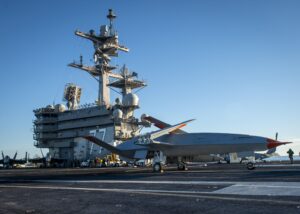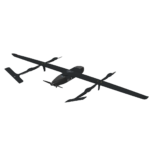
The Navy successfully controlled the unmanned MQ-25A Stingray tanker aircraft on an aircraft carrier for the first time in non-flight deck handling demonstration tests aboard the aircraft carrier USS George H.W. Bush (CVN-77), the Navy said Dec. 20. Th Navy and aircraft builder Boeing [BA] have been conducting tests for the MQ-25 with the company's test asset, T-1, ahead of production of the first aircraft. The T-1 arrived on the carrier on Nov. 30 to be tested with the ground…

 By
By 











